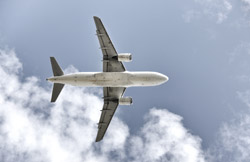Wireless networks to replace aircraft cabling
Wired sensors are currently used in the aeronautics field for monitoring various aircraft structures. However, they increase aircraft design complexity, and their deployment and installation are costly and cumbersome. Scientists initiated the EU-funded project 'Flite instrumentation test wireless sensor' (FLITE-WISE) with a view to moving away from the unnecessary burden of wires and developing wireless sensor technology. Smart sensors with radio interfaces will offer decreased sensor wiring costs, lower weight and the flexibility to be installed on aircraft. FLITE-WISE is developing a platform that includes an autonomous wireless sensor node (WSN) that can be connected to acoustic and pressure sensors. It will be able to operate airborne for continuous flight test measurements. This fully integrated WSN will be a circular, flexible patch designed to be applied to the aircraft skin. With a maximum thickness of 3 mm, it will feature an acoustic sensor, communication capability and storage. It will be powered by ultra-thin batteries that can be wirelessly recharged by inductive coupling. Packaging will enable the node to sustain the harsh environmental conditions of test flights. The first part of the project saw the development of a versatile WSN architecture supporting the pressure and acoustic sensors, and sampling frequencies of 50 kHz. A single node was capable of acquiring data from eight sensors and provides computing power for data compression. A main challenge was to produce a communication system resilient to radio interferences and jamming. To this end, scientists conducted a relevant study that proposed a jamming detection solution. Furthermore, they defined the real-time data acquisition algorithms. Except for the WSN dedicated to acoustic measurements along the fuselage, FLITE-WISE considered a rotating use case for testing new-generation contra-rotating open-rotor engines. Work for the latter case focused on the design of an electronic board. This included a radio, a micro-controller, a digital signal process, the sensor front-end and connectors for eight sensors. FLITE-WISE is expected to demonstrate the two use cases on real aircraft. The technology should have an important impact on the competitiveness of the EU aeronautics industry.







